When it comes to adding dairy goats to your homestead, there are some things to consider. Check out these five goat farming basics from Shannon Stonger.
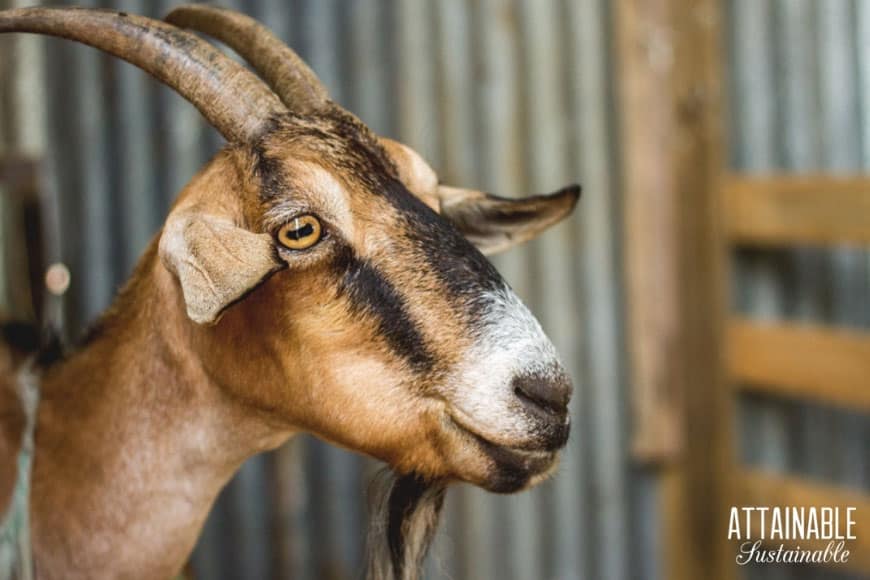
Several years ago we took a short drive down our dirt road and picked up a couple of goats. Since we began farming goats, the herd has grown. Now these lovely animals give us milk and free range in the pasture beside our family milk cow.
Bringing livestock to your property is no small undertaking. Farming goats is no exception.
Farming goats (for fun and milk)
These animals depend upon your stewardship and care and, in return, often provide you with food so nourishing you couldn’t even buy it at the grocery store if you wanted to. It is imperative that you know what you are signing up for when you decide to bring home an animal such as a goat.
Do you have the land, time, ability, and understanding to at least meet that animal’s basic needs?
Take a Peek Inside My Book!
Get a free excerpt from my book, Attainable Sustainable: The Lost Art of Self-Reliant Living! You’ll also get my free weekly newsletter, complete with recipes, gardening tips, and a little peek at what’s going on around here — both the zany and the mundane.
Here are five goat farming tips for beginners that you must consider before purchasing that milk or meat goat. As female goats are generally the first to come to the homestead, this list does not take into consideration the complicating factor of bringing home a buck.
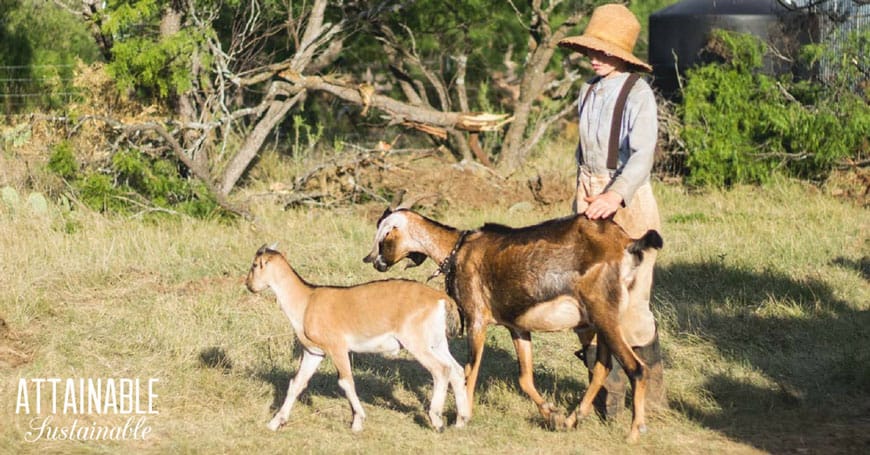
Related: Top 5 Reasons to Choose Nigerian Goats
Goat farming basics: Companionship
Goats are social creatures and as such generally require another goat for companionship. They will yell themselves hoarse if they are lonesome. Some say they can even become so stressed as to become sick–or even die–if left alone.
Make sure you plan to bring home at least two females to share the same space. They’ll keep one another company.
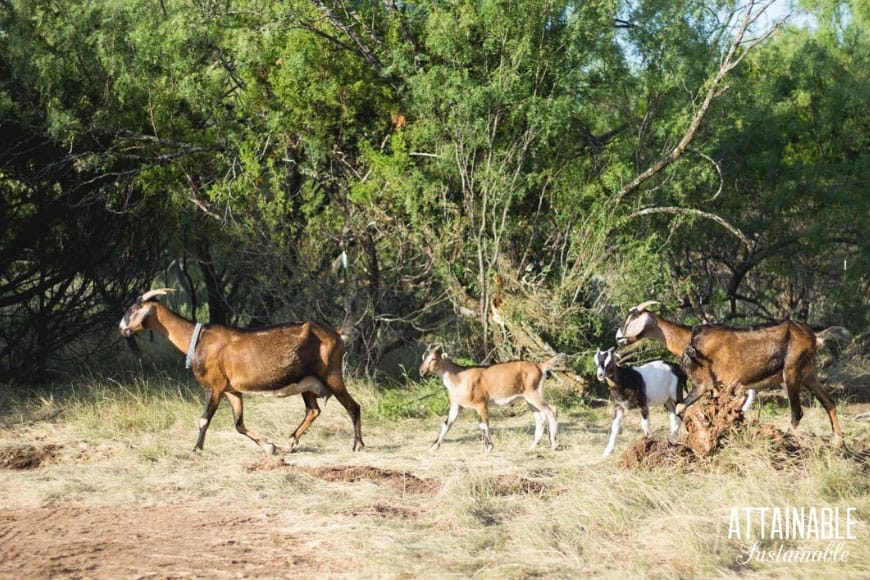
Goat farming basics: Fencing
This is the biggest problem most people have with goats. They can be escape artists, especially if there is forage, hay, or food visible on the other side of the fence. There are many options for fencing, depending on your available space.
The type of fence you need when farming goats is also dependent on the size of the goats you are bringing home. Dwarf goats, for instance, would not be held in by six strings of barbed wire while larger goats such as Nubians or La Manchas will.
Most commonly goats are fenced in with:
- Electric fencing
- Goat Wire
- Woven Wire
- Barbed Wire
Keep in mind that a fence too short can invite the goat to jump. A fence not tightly strung (especially barbed wire) will encourage a goat to squeeze through.
With larger goats we have had good results with barbed wire, though not everyone recommends it. It is inexpensive and we have not had a problem with the goats cutting themselves up or getting stuck, the usual warnings against barbed wire.
Goat farming basics: Food
Goats will eat a lot of things but it is a myth that they will eat everything. They are similar to deer in that they are browsers, eating branches and leaves and bark and weeds as well as some grass.
Goats are ruminants; they need long-stranded fibers to keep their rumen healthy. If they don’t have access to plenty of pasture, they should be given hay as well as a mineral supplement. For milk goats, feeding them a concentrated feed at milking time keeps them in good health. It’s also an incentive to stand still.
Goat farming basics: Water
Goats, like all animals, need continual access to clean water. Lactating animals are especially in need of large amounts of good water. Be sure to set up your trough or watering system near a hose, pond, or water source of some sort.
You will be moving water on a daily basis if you decide that farming goats is for you.
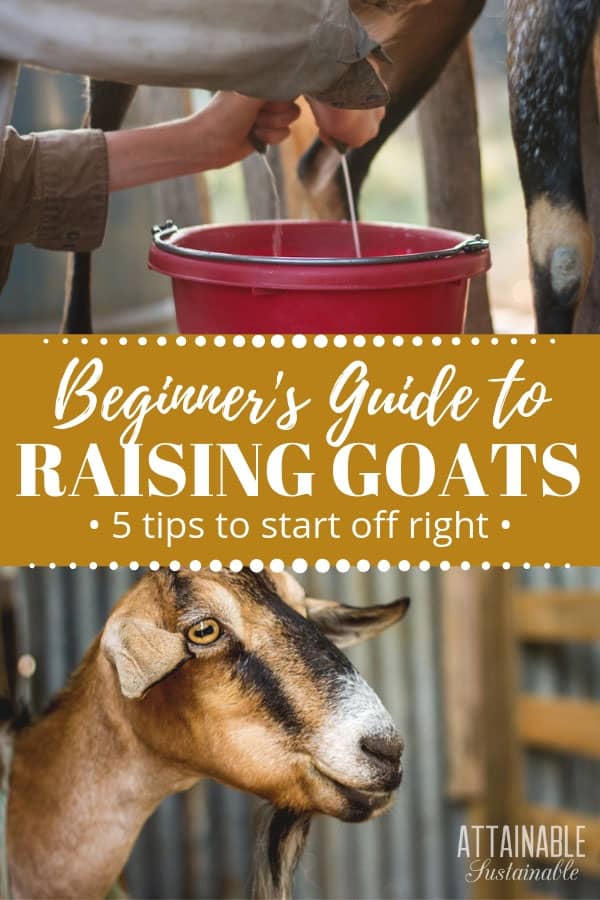
Related: Your Winter Duck Coop: Keeping Ducks in Cold Weather
Goat farming basics: Shelter
Though goats are fairly hardy animals, they do seem to have an aversion to precipitation. Keep them out of cold winds if at all possible. A simple shelter for them to escape to when the weather necessitates it is a must. If your goats will be kidding, they will also want a quiet place to go when birth is imminent.
Bedding down a shed with straw, hay, wood chips, or saw dust is important for mucking out and keeping their living area clean. Likewise, a daily mucking out of any soiled areas is helpful for preventing smells and disease.
I wouldn’t even consider bringing home these delightful creatures until all of these five goat farming basics are addressed and made ready.


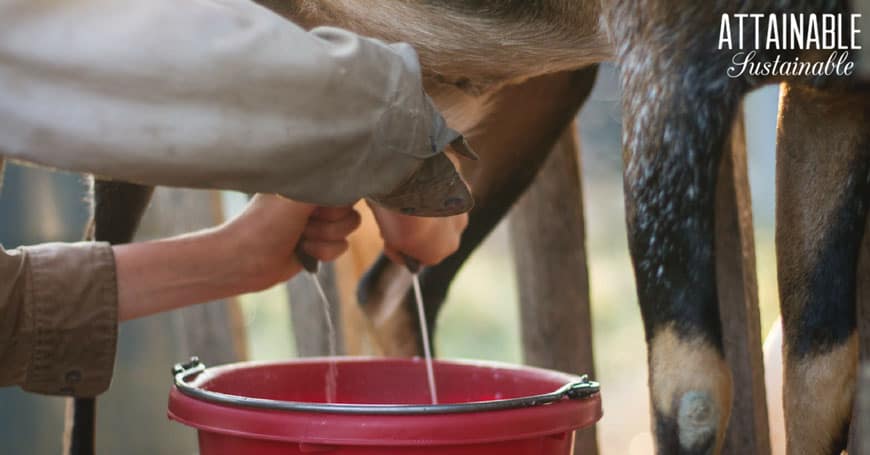




I’ve been thinking about getting goats. Its good to know that barb wire is sufficient, I was dreading the cost of electric fencing a large area.
I am on 10 acres and have 7 of it using electric netting which has worked well for years
How many goats to keep on 11 acres Liz
This is so great I have a dream of homesteading on my own and living minimalistically. Thank you for sharing.
Madi, thanks for joining us!